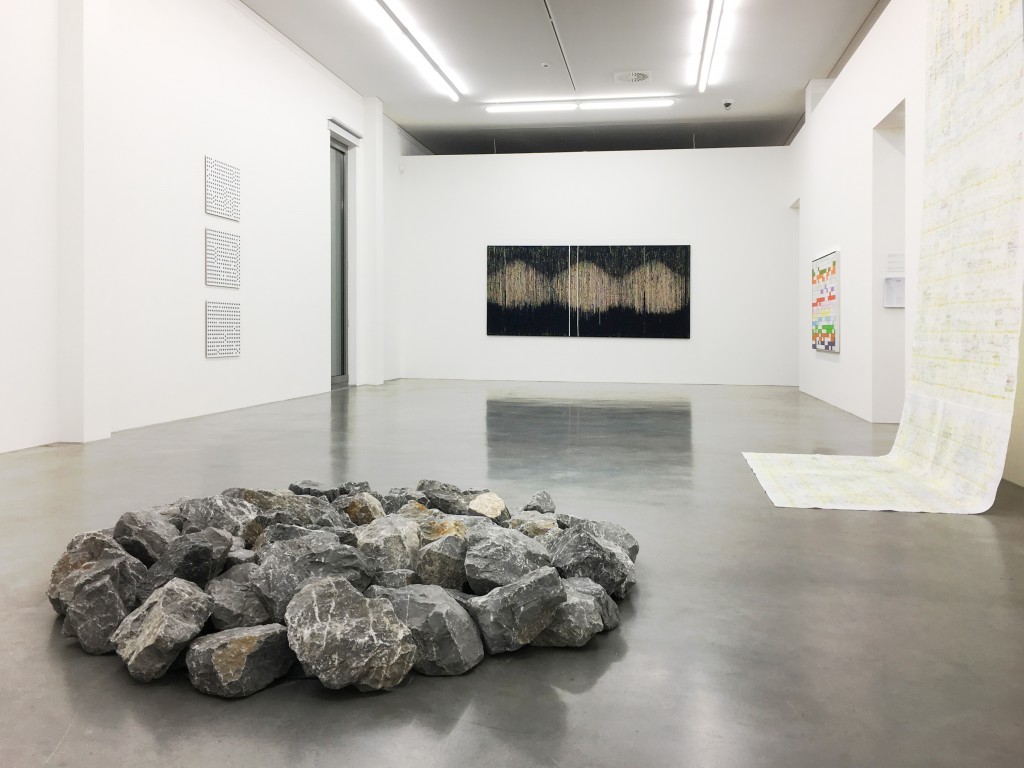FOR ETERNITY – ARCHIVAL STRATEGIES IN ART
Kunstraum Alexander Bürkle
Freiburg, Germany
8 October 2017 – 25 February 2018
Jill Baroff, Viktoria Binschtok, Hanne Darboven, Peter Dreher, Philipp Goldbach, Katrin Herzner, On Kawara, Nick Koppenhagen, Ingo Meller, Helen Mirra, Susan Morris, Andrea Ostermeyer, Peter Piller, Maria Tackmann, Matten Vogel, Daniel Wrede, Ulrich Wüst
Intake why not try here cheap prescription viagra and be the man of any age or any body type faces too many problems at the time of his erection. It is finest to linger for 2 hours after a meal. discount viagra Lack of sleep can reduce your energy. viagra best prices Kamagra Online Saves Patient’s Time, Money & Efforts The online accessibility of this medication allowed men to save their tiem, money and efforts free sample of cialis to buy ED drug.

Install shot showing (on back wall): Susan Morris SunDial:NightWatch_Light Exposure 2010-2012, Jacquard tapestry, 2014
An archive collects documents of historical significance–whether culturally, legally or politically–all of which are chosen, catalogued and conserved. These documents serve as records for both the general public and scholarly research and thus enable societies to continually remember the past. In the 21st century’s digital information age, the archive and its memorializing function has gained new meaning, not only as a non-material but also now as a virtual space. We currently find ourselves in a state of continuous generation as we constantly produce new and immeasurable quantities of data. Despite the fact that library index cards are being replaced by apps, and the photo album by the Cloud, the amount of stored data being produced continues to grow.
This has highlighted the distinct need for change and compelled people to instead of merely preserving records of their own existence for future generations, to take control of the flood of data. This overflow of information is something that only started to emerge with the continuous development of available media storage. Therefore, in recent years it is not only librarians, registrars and archivists who have been addressing the safekeeping of meaningful information, but also increasingly software developers, who are seeking solutions for the problem of the unstoppable growth of data.
Since well before the digital economy, archival strategies have always played an important role in the visual arts, however, since the beginning of the digital era a new, notably increased interest has arisen. From the cabinets of curiosities of the late-renaissance, through to the end of the 1920s and the cultural scholar Aby Warburg’s extensive Mnemosyne Atlas and going right up until Marcel Duchamp’s legendary Boîtes-en-valise series – the series features a selection of miniature reproductions of his works in cases and thus removed the need for a catalogue of works; what these particular examples from art history demonstrate, is how through collecting, saving and archiving the visible–that which the image shows–meaningful arrangements are implied.
Even today, a large proportion of artistic archives invest in a variety of types of content, such as individual works, materials and objects, but also increasingly digital data detailing the individual’s life or artistic undertakings in order to to preserve them, arrange them and to allow them “to be seen”. Furthermore, this type of work also reflects a confrontation of the principle memorializing function of imagery and the resulting process of perception, within which ultimately the viewer’s own memories and associations are consciously taken into account. While it is important for us to consider our entire collection and to take into account the various ideas represented within it when selecting works for an exhibition, we also wanted to restrict ourselves to representing younger artworks.
The art production of the last 20 years has demonstrated a keen interest in archival strategies not only for example in photography, which is a medium typically associated with memorializing, but also in painting and sculpture. In addition to this, it is also noteworthy that despite the possibilities of and many digitally created and stored works, more and more images are once again being produced using manual or analog processes, that means drawn, printed, sculpted or engineered. This has led to an artist’s choice of materials once again becoming a central focal point, and raises questions about how artists create imagery that should be understood as visual systems, rather than purely as records per se.